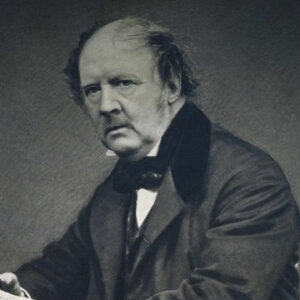William Henry Fox Talbot was a British scientist and pioneer in the field of photography who is best known for developing the salted paper and calotype processes. He was a real polymath with interests in diverse fields such as chemistry, mathematics, astronomy, philosophy, classics, and art history, but he finally acquired distinction as a pioneer in the mid-19th-century field of photography. His discovery, the calotype photographic technique, was an improvement over the daguerreotype invented by L.J.M. Daguerre. Talbot was the first to create a negative from which many prints could be made. During the 1840s, he worked intensively on photomechanical reproduction, which resulted in the creation of the photoglyphic engraving method. As a child, he was intelligent and inquisitive, and he acquired interests in a range of topics. After completing his study at Cambridge’s elite Trinity College, he submitted many papers to the Royal Society. With an artistic bent and a fascination for chemistry, he began a series of photographic experiments. In the years that followed, he made numerous significant advances to the discipline of photography, the most notable of which were the inventions of salted paper and photographic negative. The Royal Society honored him for his photographic discoveries.
Youth and Early Life
William Henry Fox Talbot was born on February 11, 1800, in Melbury, Dorset, England, to William Davenport Talbot and Lady Elisabeth Fox Strangways. He was their only child. His family had many connections.
His father passed away when he was still an infant. He lived with his single mother in a succession of residences until she remarried in 1804.
He was a brilliant young child endowed with intrinsic curiosity and a passion for education. His primary schooling was received at the Harrow School in Rottingdean. After completing his secondary education, he enrolled at the famous Trinity College in Cambridge. In 1820, he was awarded the Porson prize in Classics.
In 1821, following his graduation from Trinity, he began submitting papers to the Royal Society. Although he had a strong interest in the natural sciences and produced articles on astronomy and physics, most of his publications were on mathematical topics.
He was a polymath with diverse interests in numerous disciplines. He possessed an artistic disposition and developed a passion for photography, which was in its infancy at the time and offered enough opportunity for experimentation and discovery.
Henry Talbot’s Career
In 1826, he published ‘Some Experiments on Colored Flame’ in the Edinburgh Philosophical Journal, and in 1827, he published ‘Monochromatic Light’ in the Quarterly Journal of Science. He has contributed several articles on chemical topics to ‘Philosophical Magazine.
In 1833, while visiting Lake Como in Italy, he attempted to capture its grandeur in a sketch but failed. Consequently, he began to consider a device that might capture images on light-sensitive paper. He began working on this project as soon as he returned home.
He briefly served in the House of Commons (1833–1844) and spent most of the 1830s working with photography. He made “salt paper” by soaking a sheet of paper in a solution of common table salt and then brushing it with a concentrated solution of silver nitrate. This rendered the paper light-sensitive; when exposed to light, it darkened.
He went on to create a photographing technique he termed Calotype. This technique, which utilized silver iodide-coated paper, was deemed an improvement over Daguerre’s earlier daguerreotype procedure. He obtained a patent for this method in 1841.
The six-part publication ‘The Pencil of Nature’ (1844–1846) is recognized as a significant and influential work in the history of photography. It was the first photograph-illustrated book to be released commercially. He also authored a number of additional works, including “English Etymologies” (1846).
Talbot’s Major Opera
Despite being a brilliant polymath, Talbot acquired his greatest recognition as a photographic pioneer. Through a series of experiments, he produced salted paper, which could be used to generate images known as “salt prints” because it darkened when it was exposed to light.
Calotype, often known as talbotype after him, was another of his significant innovations. It was an early photographic process that generated a translucent original negative image from which several positives could be made via easy contact printing.
Awards & Achievements
In 1838, he was awarded the Royal Medal in mathematics “For his works entitled Researches in the Integral Calculus, which appeared in the Philosophical Transactions for 1836 and 1837.”
1842 saw Talbot earn the Royal Society’s Rumford Medal for his photographic discoveries.
Personal History and Legacy
In 1832, Henry Fox Talbot wed Constance Mundy, and the couple produced four children: Ela, Rosamond, Matilda, and Charles.
In his final years, William Henry Fox Talbot suffered from poor health, and he passed away on September 17, 1877, at the age of 77.
Estimated Net Worth
Unknown.


